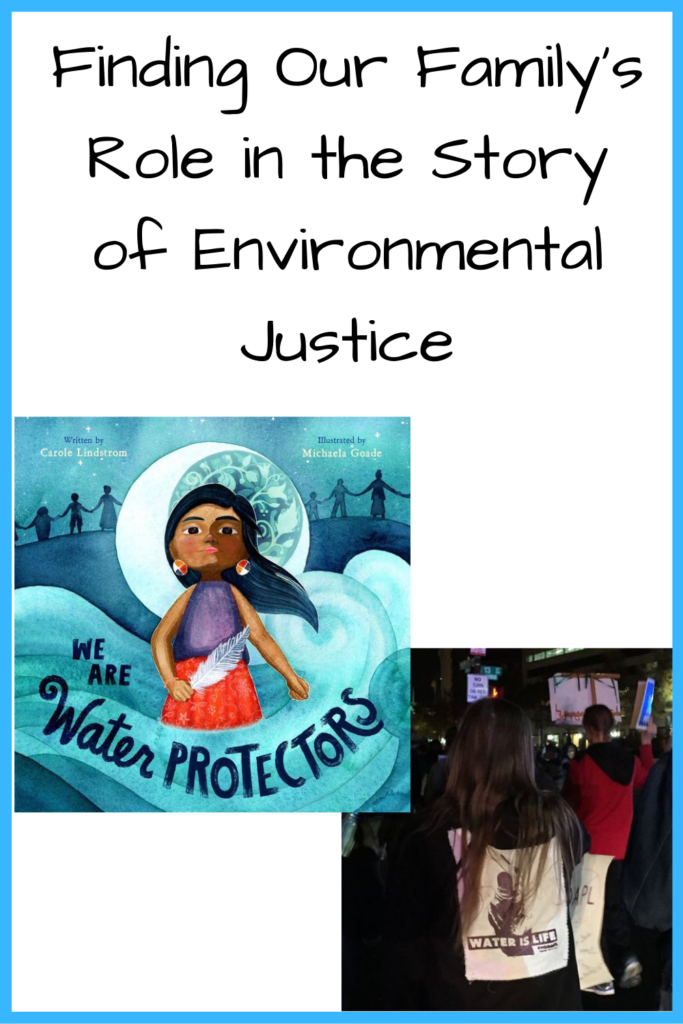
“But how does the story end?” my older son asked.
We had just finished reading We Are Water Protectors, a powerful picture book written from the perspective of an Anishinaabe girl. She talks about how her people regard water as life and how a “big black snake” threatens the water and therefore them. While the book never names what the “snake” is, the pictures clue the reader in – it’s an oil pipeline. Like many real-life young people like Autumn Peltier, the narrator is an Indigenous water protector committed to halting water from becoming polluted with death instead of life.
As my son noticed, the story ends on an ambiguous note. While the narrator talks about the danger of the black snake and the importance of uniting against it, she never says what happens to the snake or the people fighting it. My son wanted to know: Did they win? Did they lose?
“That’s the cool thing – the story’s not over yet,” I told him. “The oil pipeline in this story isn’t finished. The oil company started building it, but then President Obama’s administration told them to stop. But then Trump told them to continue. But then someone in one of the departments said they needed to stop and I think it’s halted for now. So people – like the ones in this book – are still fighting it. In fact, that’s the pipeline I was marching against when I was pregnant with you. And there’s more we can do.”
A smile lit up his face, recognizing that we are all characters in this story. The story isn’t finished yet – the ending is collectively up to us.
And isn’t that true with every story about the environment? Yes, we’ve already gotten to the point where some shifts from climate change are inevitable. People as far as Europe only had to look out the window recently and see the haze from the fires blanketing America’s West Coast to know that.
But the story still isn’t over. There is always more we can do. There is always space for us to play a role, to be a character. There’s always a place for action.
Does that mean we should be the main character? In the sense that we’re all the main characters in our own story, sure. But when we’re talking about the “heroes” or the “leaders” – nope, unless we’re part of “front-line” communities who are the most affected. We Are Water Protectors also does a great job of showing how to follow the lead of Indigenous communities who have long worked for environmental justice. Reading their story and recognizing our role as supporting characters is a big first step.
So now that we know we can be part of the story, what do we do?
Raising Luminaries has some great recommendations specifically related to We Are Water Protectors in her review of the book: https://booksforlittles.com/we-are-water-protectors/. In addition, we can financially support groups doing this work, like the Indigenous Environmental Network. When COVID is over, we can join in protests and marches led by these groups. Taking cues from these groups’ lead, we can contact policymakers in our own communities to find out how they are preserving water quality and reducing the use of oil.
And the best part is that we can do all of these things with our kids! While climate change and other big environmental issues like water quality seem too big and depressing for children to handle, taking action is empowering. Finding out that they can be part of transforming these systems completely changes their own narratives – and helps them find themselves in the bigger narrative overall.